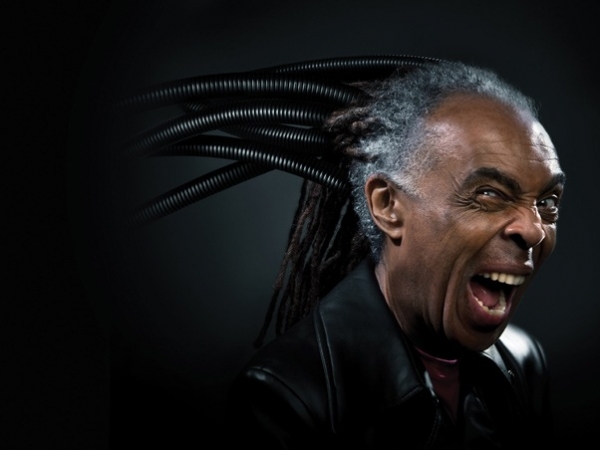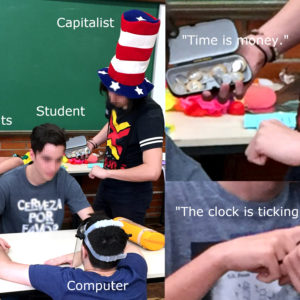
Summary: Can technology oppress or liberate people? This lecture introduces the Philosophy of Technology of Álvaro Vieira Pinto in dealing with this question. Vieira Pinto wrote extensively about cybernetics, artificial intelligence, transhumanism, and virtual reality’s role in mediating race, class, and colonial oppression, anticipating in the 1970s what STS scholars in other countries did in the 1980s and much later. He concludes that technology can be either oppressive or liberating, depending on the intentions of the social groups that design them. The lecture ends by describing how the Digital Culture Movement, led by musician Gilberto Gil, appropriated technology through anthropophagy to liberate endangered popular cultures.
Audio lecture recorded for the online Designs of the Oppressed (2021) course.
Full transcript
What’s the role of technology in human development? Can technology hinder human development? Can technology curtail oppressed people? Can technology be an oppressor to the oppressed? Should we feel oppressed with so much technology around us, living in a completely artificial world? Is this something real, or is this something that we just hear all around? If so, why do we hear that?
Those questions are typically asked by anyone who lives in a contemporary world where technologies, especially digital technologies, are embedded into many different artifacts, work processes, and everyday life processes that rely upon digital technologies. They raise these questions in a fair way because we must learn to be prepared to decide which technology we want to use and which technologies we must use to produce our existence. For instance, we cannot survive in current societies if we don’t have a mobile phone to communicate with other people for work purposes and any other realm of life.
Paulo Freire hasn’t written so much about technology and its role in human development; neither has Augusto Boal. However, Alvaro Vieira Pinto has written extensively on the philosophy of technology based on their similar perspective on human development: the unfinished state of human beings and their historical humanization processes. Alvaro Vieira Pinto says that technique plays a vital role because it corresponds to the effort of human beings trying to humanize themselves to a higher degree of development.
Every time humanity develops a new technique, humanity becomes more humanized because humanity can now handle reality and manipulate reality more elaborately. Technique follows the ontological vocation of human beings described by Freire: to become more. Humans are trying to become more through technique, and you cannot, at least from Vieira Pinto’s views, separate who is human and what is technique. Humans are bound to techniques; by technique, he means any human action with a specific purpose, crafted in culture to become more effective and closer to understanding reality.
Vieira Pinto does not agree with some technology critics like Martin Heidegger, who says technology has an intrinsic bias against humanity. They say technology is bad, it invades our lives, and we must stop these processes by denying or rejecting some technologies and returning to things as they are.
For Vieira Pinto, Freire, and Boal there is no such fixed reality to return because reality is in a state of change, always on the move. Therefore, we must understand technology as part of that changing society. That’s precisely what Vieira Pinto has done in his Concept of Technology masterpiece. In this book, he explains that technology originally liberated humans from the tiring labor of any bothering activity.
However, in a divided society, the leading groups in the capitalist society, for example, the bourgeoisie or, in the feudalistic society, the noble people, would try to control the technology and revert to its initial purpose of saving some work. Now technology is being used to stop some work that is not favorable to the leaders of society. These leaders would try to keep the current status quo as much as possible because it benefits them. So they are oppressors, and they oppress using technology.
Eventually, the oppressed might think that since oppression is coming from far away and the face of oppression is technology, they might mistake technology for the oppressor. They might blame technology and try to destroy technology somehow or get rid of that technology. No direct benefit from doing that is achieved because the oppressor might fix or replace the technology and keeps up with oppression. Not surprisingly, through an ideological operation, they might justify that this new technology that has been just put on the oppressed face is much better or is perfect, and they will not suffer from that as if oppression was a kind of technological problem that can be fixed.
This is a very dangerous argument that many people in the design field reproduce: the naive criticism of technology. From Vieira Pinto’s, Boal’s, and Freire’s perspectives, we need to appropriate that technology for our purposes if we want to react to the oppression that comes through that technology. So there will be material biases against us within these technologies. Still, we must criticize, understand where this bias is, and revert it so that it becomes the oppressed bias, i.e., biased against oppressors.
Not every technology might be easy to do. Still, it depends on the situation because, for Vieira Pinto, any technique depends on the previous techniques that made available that first technique in the first place. So, in any case, we must consider the conjuncture of techniques, the several techniques that come together to realize the human purpose, such as the liberation from oppression. Some techniques might fit within this conjuncture; other techniques might not fit.
There is a specific approach in the Brazilian cultural domain called anthropophagy, which originally meant eating human flesh. In the cultural domain, it’s a more symbolic way of saying we must somehow admire and digest our colonizers, our oppressors, and take what is good from them and expel what is bad. In a sense, we filter out what we don’t want, and we filter in what we want to incorporate into our culture.
Therefore, we have to find the culturally specific roots. These cultural traditions might connect well with these new traditions, with these different approaches for understanding and transforming reality from foreign countries, the oppressors, or the colonizers. This was, of course, inspired by the first Brazilian indigenous people, the Tupinambá, who ate the Portuguese in an honorable way once they arrived at our coast. They thought these Portuguese had some interesting attributes they wanted to be part of their tribes.
This concept of anthropophagy inspired many artists at the beginning of the 20th century, in the modernism movement in Brazil and later in the tropicalia movement in the 70s. And this was protagonized by one of the leading musicians of that time, Gilberto Gil, who also became the Minister of Culture in the 2000s. And over there, he developed an exciting digital cultural program that is very influential up to now, that inspired Brazilians to be anthropophagic in the digital domain and try to appropriate all kinds of digital technologies to update and keep our cultural heritage, which is so diverse and rich.
That’s what we try to do in the interaction design field here in Brazil, based on the multiple references I’ve been discussing. So we try to take a critical stance on interaction design and see its role in fighting oppression while building up authentic digital culture in the Brazilian domain.

